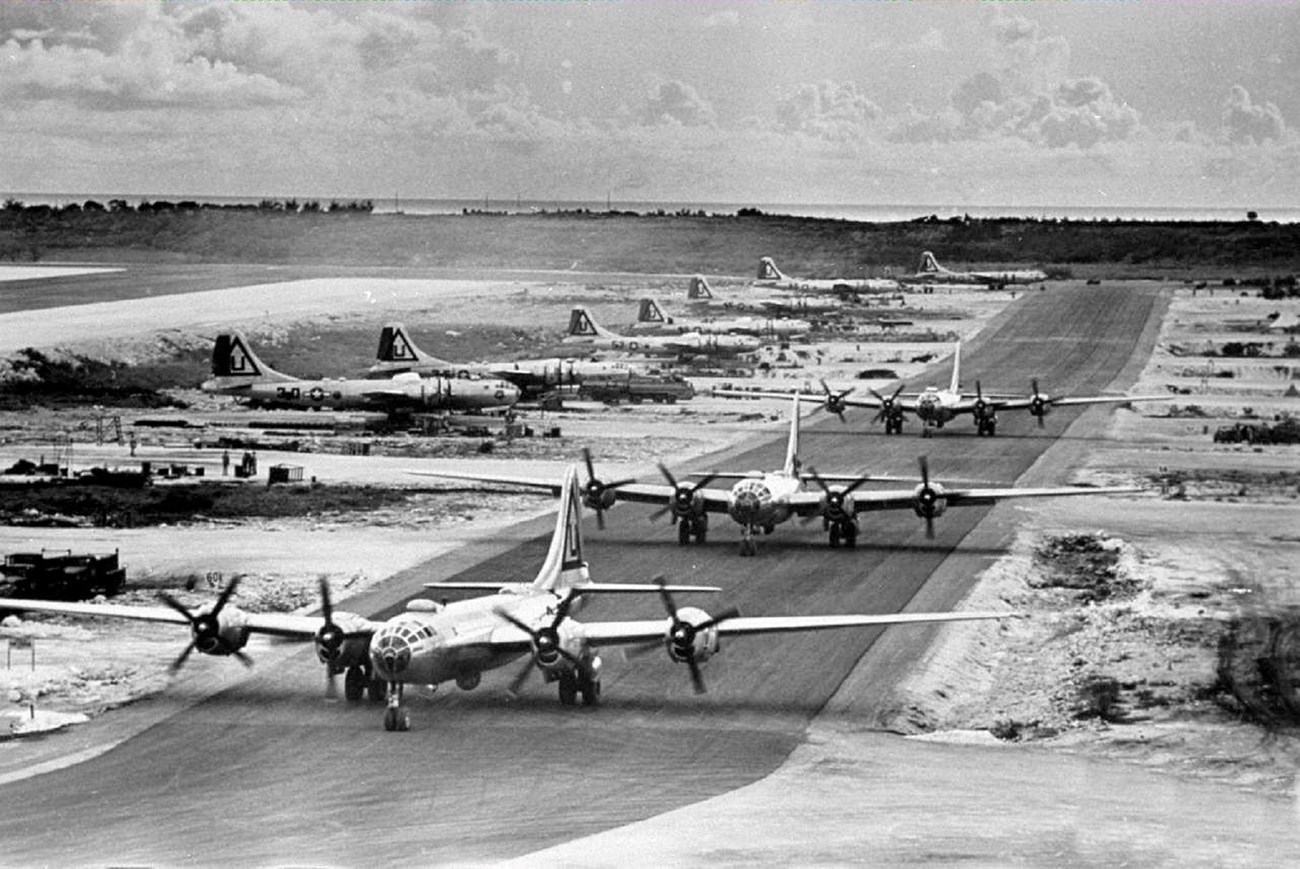Last updated: February 3, 2025
Article
Municipality of Tinian & Aguiguan, Northern Mariana Islands

US Air Force
The island of Tinian was occupied by Japanese forces during the Second World War up until August 1944 when the United States liberated the Mariana Islands. The U.S. Navy immediately began building runways and infrastructure at the island's West Field and North Field. At the time, North Field was the largest airfield in the world. From North Field, B-29 Super Fortress bombers conducted raids on the Japanese Home Islands, and it was from this airbase that the U.S. Army Air Force's 509th Composite Group planes Enola Gay and Bockscar left to drop the first atomic bombs on Hiroshima and Nagasaki. These events, along with a large air raid on Tokyo, brought the war to a close on September 2, 1945.
Since the end of the War, the people of Tinian have continued to protect and actively preserve their World War II runways, buildings, landing beaches, and other associated sites through ongoing maintenance, interpretation, and commemorative and remembrance ceremonies. In addition, many of the sites on Tinian associated with World War II are part of the Tinian Landing Beaches, Ushi Point, and North Field National Historic Landmark District.
